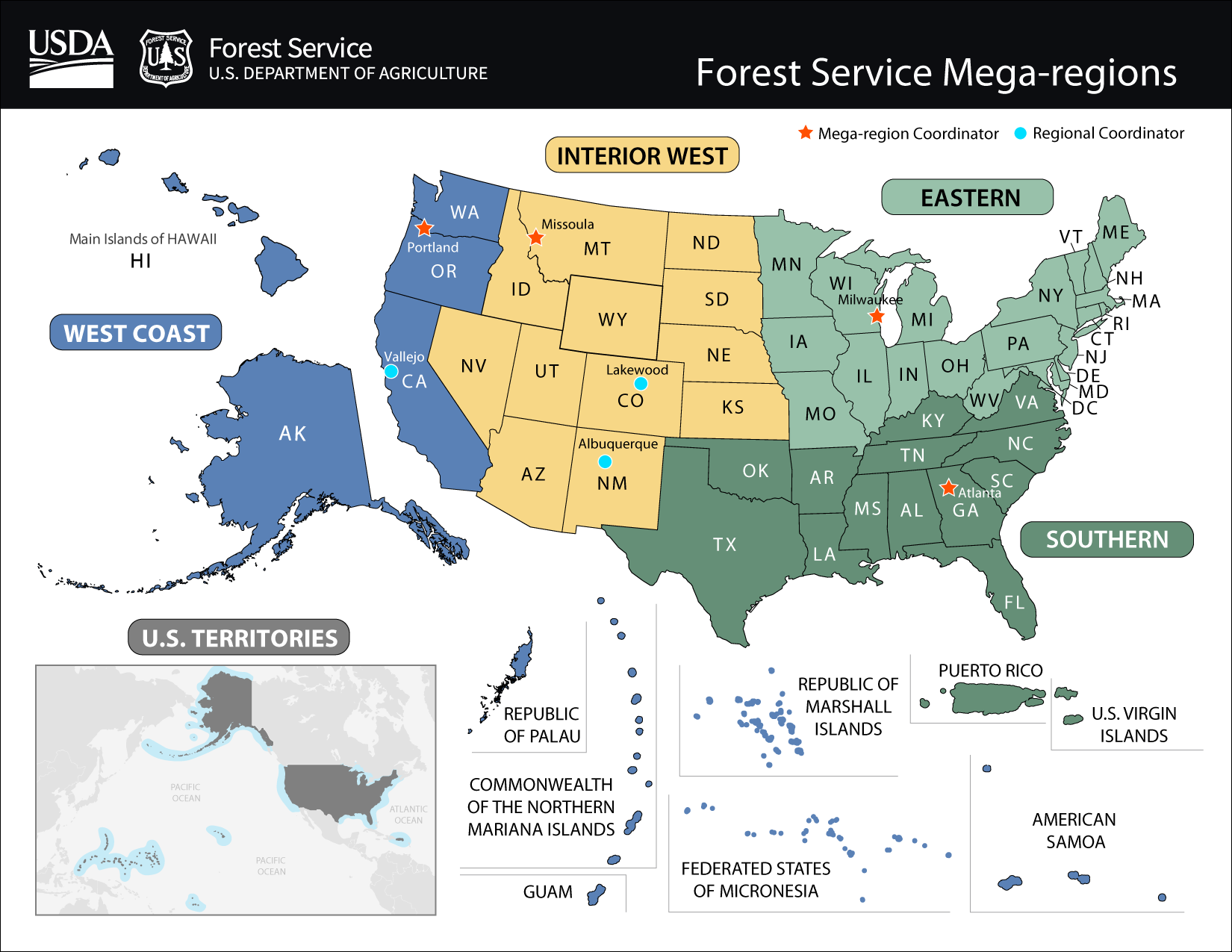Forest Health Monitoring

Forest Health Monitoring (FHM) is a national program designed to assess the status, trends, and future risks in forest health using indicators on an annual basis. This program focuses on analysis, data integration, and decision support to inform land management. FHM assesses conditions on all U.S. forest land through a partnership involving USDA Forest Service, State Foresters, other state and federal agencies, Tribal Nations, non-governmental organizations, and academic groups.
Forest Health Hubs reflect Forest Health Monitoring's focus on assessing and reporting on forest health conditions on a widespread basis. The nation's forests are divided into the five Hubs based on geographic and biological proximity. A management team represented by individuals from a diversity of partners including state agencies advises FHM on strategic direction and facilitates information exchange.
FHM Program Components
Analysis: FHM conducts analysis to evaluate the implications of forest health trends and future risks for forest resilience and the benefits forests provide. This information is important for making strategic, landscape-scale decisions on a range of issues. FHM’s analysis is built on an indicator-based approach to communicate how forests are responding to a variety of agents and processes.
Data Integration: FHM’s analysis component is dependent on a variety of high-quality information sources to assess forest ecosystem health. Therefore, FHM advises partners on information needs identified through analysis, recommendations for changes in data collection methodologies to facilitate analysis, and development of new approaches.
Decision Support: FHM translates complex analysis and technical data into meaningful forest health information for landscape-scale planning and decision-making. Key audiences include Forest Service and other federal agency decision-makers at national and regional levels, cross-boundary partners (states, federal agencies, and Tribes), subject matter experts, conservation organizations, the forest products industry, and others focused on sustaining forests and their benefits.
